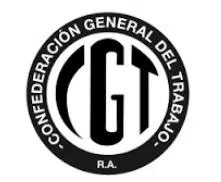 The Latin word confoederatio came to our language as confederation . The concept can refer to a group of individuals or associations or to the alliance established by different sovereign States to jointly defend common interests.
The Latin word confoederatio came to our language as confederation . The concept can refer to a group of individuals or associations or to the alliance established by different sovereign States to jointly defend common interests.
For example: "The Pan American Confederation of Hotels and Tourist Establishments has a new president" , "The governor promised to meet with leaders of the Regional Confederation of Education Workers" , "The Copa América is a tournament organized by the South American Confederation". of Football » .
For international law , confederations are alliances between States that are created through constitutions or common treaties, which allow their members to complement each other on issues related to trade and defense, to name two possibilities.
In this sense we can name Serbia and Montenegro , a confederation established in 2003 by the Republic of Serbia and the Republic of Montenegro . This union was maintained until 2006 .
Confederations can also be alliances of non-governmental civil institutions. The General Confederation of Labor ( CGT ) of Argentina is an entity that brings together numerous unions , such as the Railway Union , the Truck Drivers Union , the Metallurgical Workers Union , the Union of Mechanics and Related Automotive Transport Workers and the Workers' Union of The Construction of the Argentine Republic .
In the field of sport , it is common for clubs and regional or national associations to meet in confederations. Such is the case of the Brazilian Basketball Confederation (made up of more than 700 clubs) and the African Football Confederation (which has more than 50 members).
Former Swiss Confederation
In Swiss, the term Eidgenossenschaft is used to talk about the confederation , which was the precursor of what the Swiss Republic represents today. It was a federation of weak unions between small, practically independent States, which took place between the last stage of the 13th century and the year 1798, when Napoleon I invaded it and turned it into the Helvetic Republic.
The former Swiss Confederation was, in essence, an alliance formed by the communities of the central Alpine valleys that had the objective of simplifying the pursuit of common interests, such as free trade, and also of guaranteeing the peace of the trade routes of great importance that the roads crossed between the mountains.
In the year 1291, the rural communities of Unterwalden, Schwyz and Uri signed a Federal Charter that is considered the document that gave rise to the founding of the Old Confederation, although it is possible that alliances with quite similar characteristics existed a few decades earlier.
Rhine Confederation
 Emperor Napoleon I Bonaparte created the Confederation of the Rhine, uniting the States of the First French Empire, in the context of the so-called Napoleonic Wars . At first, it had sixteen German states, after the defeat suffered by Russia and Austria in the Battle of Austerlitz, although it took its definitive form in 1806 with the Treaty of Pressburg, and lasted until 1813.
Emperor Napoleon I Bonaparte created the Confederation of the Rhine, uniting the States of the First French Empire, in the context of the so-called Napoleonic Wars . At first, it had sixteen German states, after the defeat suffered by Russia and Austria in the Battle of Austerlitz, although it took its definitive form in 1806 with the Treaty of Pressburg, and lasted until 1813.
Previously, given certain family impositions, the former states of Bavaria, Württemberg and Baden had already been transformed into absolutist kingdoms, although the Napoleonic code was forcibly adopted in all the states created by Napoleon.
German Confederation
In 1815 the Congress of Vienna established a union that grouped 39 States into a confederation chaired by the House of Austria. Its predecessor was the Confederation of the Rhine, founded nine years earlier by Napoleon I to replace the Holy Roman Empire .
The German Confederation was created so that the small States of that Empire could enjoy security , and not to support German nationalism, which at that time was in full growth, since Vienna did not support it.
